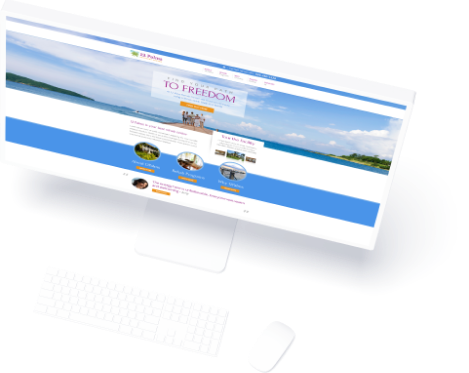6 Types of Web Design to Consider for Your Website
With 94% of first impressions relying on web design, you must create a beautifully crafted website for your business. But when you get started with web design, you may not know what approach to take with your website. What types of web design are best for your business?
Luckily for you, we’ve got all the answers. Keep reading to learn about six types of web design and the pros and cons of each. Plus, we’ll cover the different types of websites you can create, so you can determine which one is best for your business!
Need some marketing inspiration? Join 150,000+ savvy marketers by subscribing to our email newsletter for the latest tips and tricks!
We don't just want to tell you about the beautiful work we do. We've built over
WE WANT TO SHOW YOU
Websites in industries like yours
6 types of web design for your website
Ready to build your website but aren’t sure which web design format is best? Here are six of the most common web design layouts for your business and the pros and cons of each.
Web design format #1: Static page layout
One of the most basic types of website design is static page layout. With this layout, you build a website with pre-set page dimensions — it has a permanent width. Static layouts stick to these dimensions, regardless of the browser or device type.
Static layouts have phased out with the rise of mobile usage. Since these sites don’t adapt to devices, they don’t provide a positive user experience on smartphones or tablets. While static layouts are still an option, you typically don’t want to use them unless you’re creating a completely separate mobile version of your site.
Pros of static page layout:
- Easy to set up
Cons of static page layout:
- Not responsive to devices or browsers
- Requires creating a separate mobile site (more work)
Web design format #2: Liquid design layout
Next on this list of types of website design is liquid design layouts. This layout, also known as fluid design, uses flexible units rather than the fixed units static layouts use. Since the units are flexible, the page will always fill the width of the device’s screen, regardless of what device it is.
Because user experience is critical to your site driving and engaging traffic, liquid layouts have also started to phase out as a viable option for businesses. While you can still use this layout, you risk delivering a poor user experience from your site stretching too far or squishing information together on the page.
Pros of liquid design layout:
- Easier to set up than responsive design
- No information gets cut off on pages
Cons of liquid design layout:
- If a browser is really wide, information gets stretched to fit the screen and can look unappealing
- If a browser is smaller, information gets smooshed together to fit the screen, making it difficult to read and browse
Web design format #3: Adaptive website layout
One web design format you can use for your site is adaptive website layout. As the name implies, this website uses CSS queries to adjust the website’s size to detect the size of the browser. Adaptive websites will automatically alter the website’s layout to provide the best user experience for visitors.
With adaptive website layouts, there are set parameters for how a website will adjust. For example, a set parameter may look like this: “If the browser is 500 pixels wide, set the main content container for 400 pixels wide.”
For example, if you have a website with a two-column layout, the adaptive layout would change into a single-column design on a small browser screen.
Pros of adaptive website layout:
- Easy to set up
- Takes less development time than responsive layouts
- Can adjust your website according to each browser size
Cons of adaptive website layout:
- Device widths in between set points can cause your site to have too much space or not enough space
- Isn’t fully responsive
Web design format #4: Dynamic website layout
When you’re looking at a list of the types of web design, you’ll see that the dynamic website layout is an option. Dynamic website layouts are great for people who don’t have extensive HTML knowledge. These websites can deliver different content to website visitors, even if two separate people look at the same page.
With a dynamic website layout, you build a database of information and features. Then, when a user requests a page, the web coding automatically works to put the components together from your database to form the webpage.
Pros of dynamic website layout:
- Interactivity with users
- Increased functionality for users
- Less coding skills required
Cons of dynamic website layout:
- Can be more complex to set up with different functionalities
- Tend to load slower because of all the different elements and page compositions
Web design format #5: Responsive design layout
Next on our list of types of website layouts is responsive design layout. This layout format is the most popular type, as it allows your site to accommodate all devices and fill the browser size perfectly.
Responsive design is built with a mobile-first approach. You create your mobile layout first, and then you expand your website for bigger browser sizes. So instead of trying to trim down your website and make it smaller, you start small and build it bigger.
You can see a great example of responsive design from Dropbox. Here’s how their site looks on a large desktop browser:
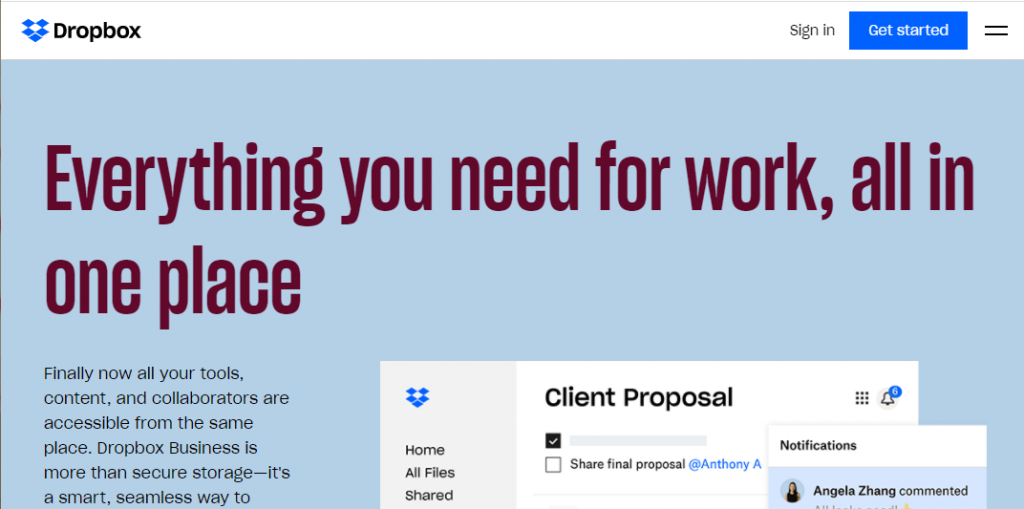
When you look at it on mobile, the entire site is adjusted to fit the mobile browser size, which delivers a great user experience.
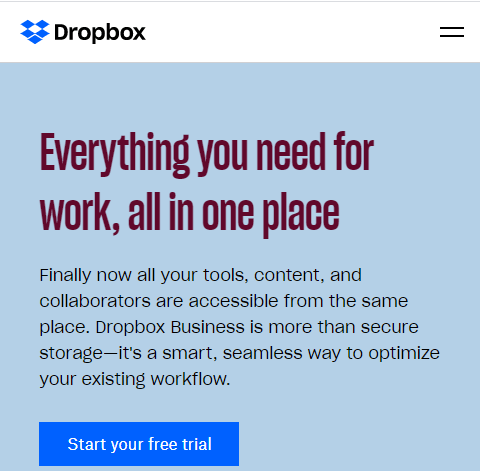
Pros of responsive design:
- Get a website that’s built for mobile users
- Delivers a seamless experience on all devices
- Don’t have to build a separate mobile site
Cons of responsive design:
- Takes more time to build and develop
Web design format #6: Single page layout
The last item we’ll cover on our list of types of web design is a single-page layout. As the name implies, single-page layouts use only one page that users scroll down to find information about your products or services.
With this design layout, you can have a “navigation menu” with links to specific points of your page. KitKat is a great example of this single-page layout.
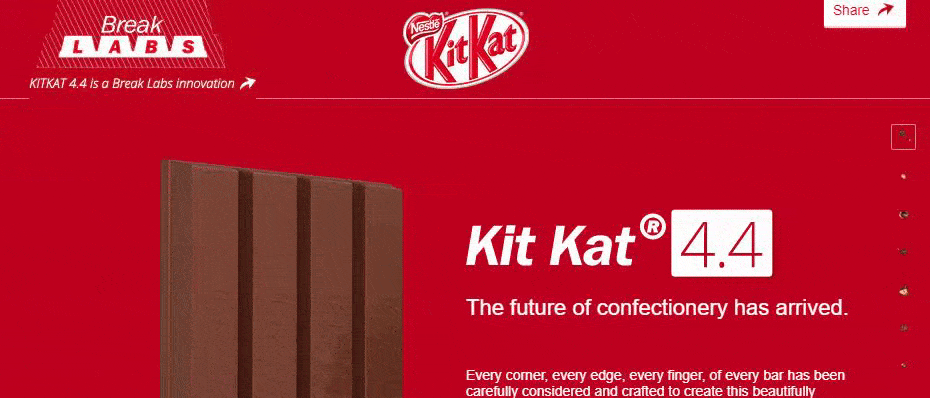
Pros of single-page layout:
- Easy to create
- Can help you create a clean and simple website
Cons of single-page layout:
- Cannot be used for businesses that sell products online
- Cannot be used for companies that need multiple pages
- Can deter people away if the single page is too long and requires too much scrolling
Types of websites: 4 types of websites you can create
In addition to narrowing down your list of types of website layouts to the best one, you also must determine what kind of website you need to create for your business. Every business has different needs, which means your site type may differ from others.
Here are four types of websites you can create for your business:
1. Blogs
First on our list of types of websites is blogs. Blogs are websites that share helpful information with readers about topics in their industry.
While a blog may not be your company’s primary website, you may consider creating a blog site if you’re doing content marketing. Content marketing is a crucial strategy for helping your business grow online and build trust with your audience.
You may consider having a separate blog website, like Allstate, or integrating it into your core website to help you take advantage of the benefits of content marketing.
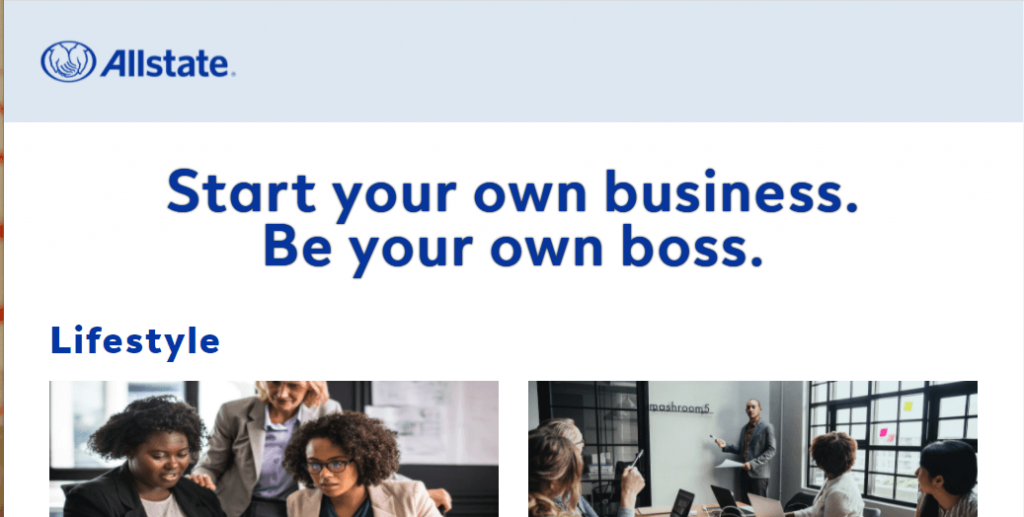
This website type can use any type of web design format, except for single-page layouts. The best types of web design layouts for this website type are adaptive and responsive.
2. Ecommerce websites
Another type of website you can create for your business is an ecommerce website. This website type is best for your business if you want to sell products on your site.
Ecommerce sites are built to host product pages, add products to a cart, and complete transactions. If you’re looking to sell products, this website type is best for your business.
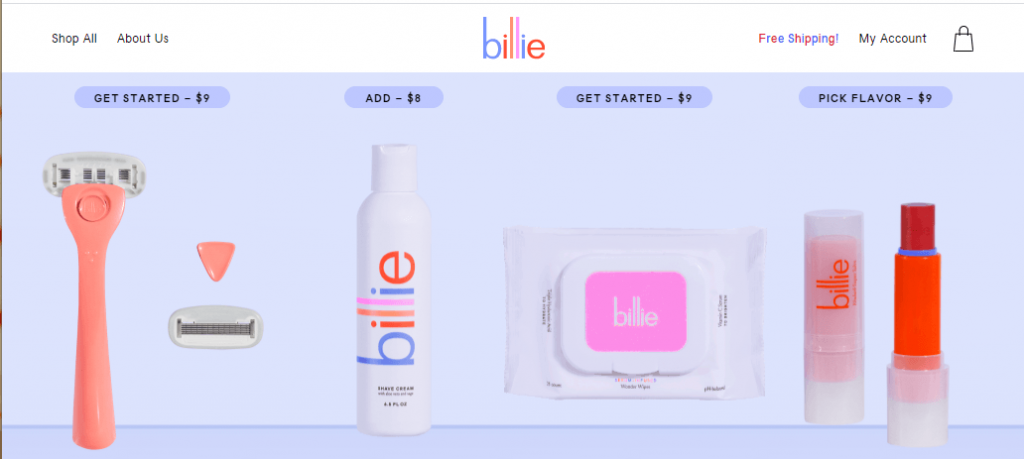
In terms of the best types of web design for an ecommerce website, responsive and adaptive are most suitable for an ecommerce site.
3. Business websites
Another type of website you can create is a business website. A business website is a standard site — it contains information about your company and the services you offer. If you don’t sell products online, you may also build a business site just to showcase what you offer.
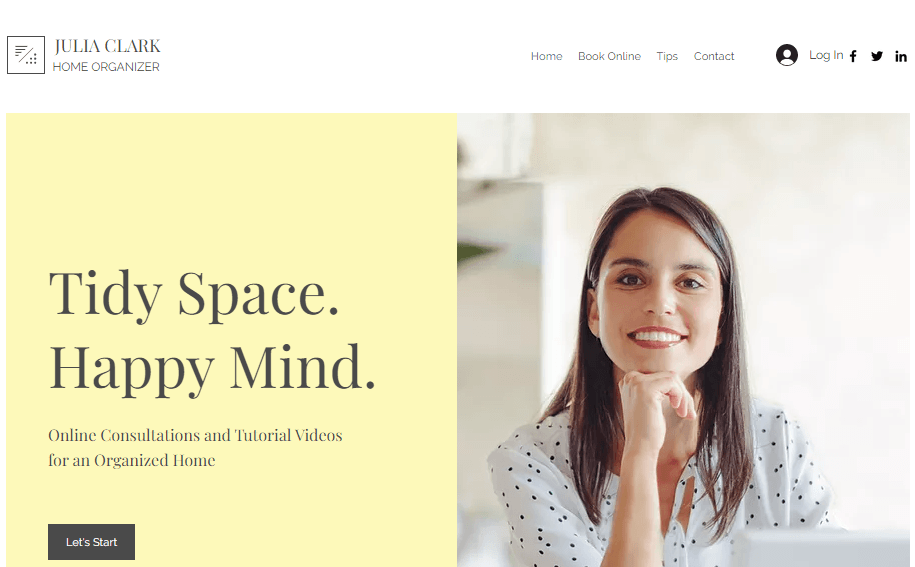
These sites are simple and serve as a hub for people to learn about your business. You can use this website type if you’re not selling products on your website.
For a business website, you can use any of the types of web design listed above — you’ll want to choose the ones that help you deliver the best experience for your audience.
4. Membership websites
The last type of website you can create is a membership website. With this website type, you have a paywall for people to enter. Only people who have a membership can enter your site and see your products.
Grove.co is a membership website example. You must create an account and pay the membership fee to see all their products.
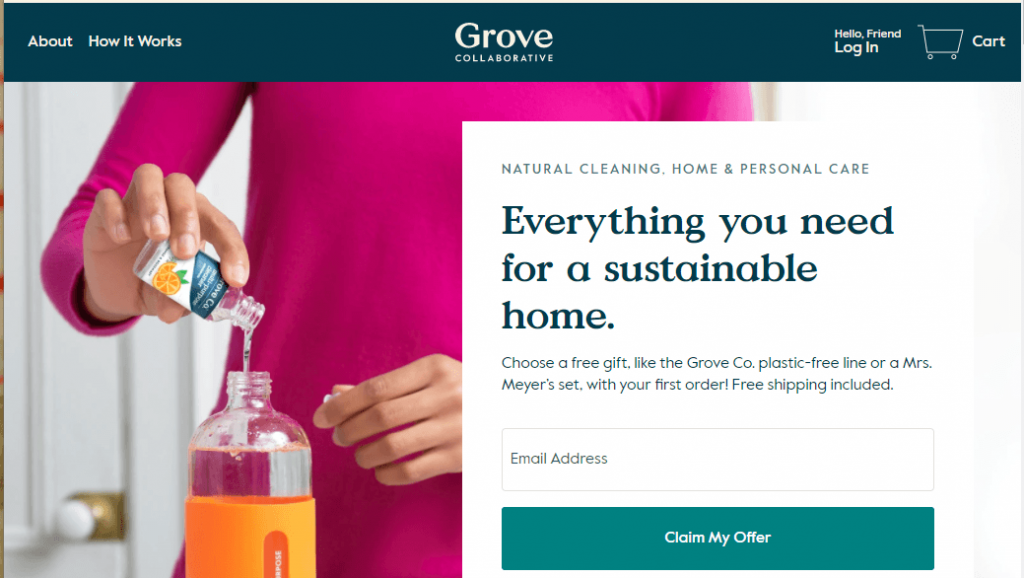
If you want to use this website type, you can use two types of web design layouts: adaptive or responsive. These layouts will work best for hosting products for members.
Need help figuring out which type of web design is best for you?
With so many types of web design available, it’s challenging to know which type is best for your business. If you’re feeling overwhelmed with building the best website, WebFX can help you create a beautiful web design for your business.
We’ve designed over 1000 websites and won dozens of awards for our website design. Our team of over 300 marketing experts can help you craft a beautifully designed website that delivers the best experience for your audience.
Ready to build your dream website? Contact us online or call us today at 888-601-5359 to speak with a strategist about our web design services!
The post 6 Types of Web Design to Consider for Your Website appeared first on WebFX Blog.
